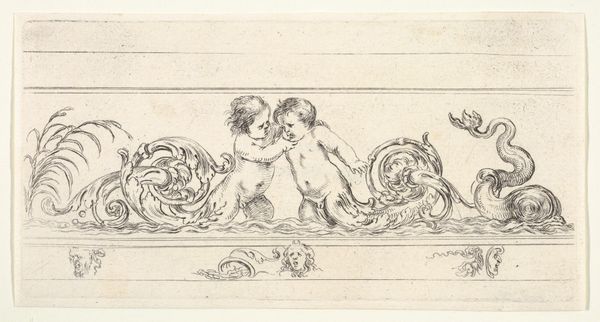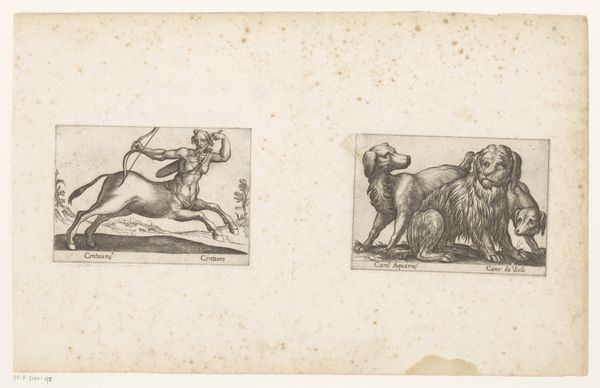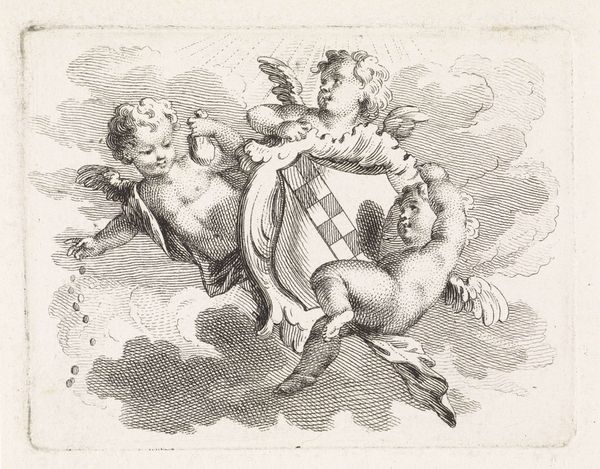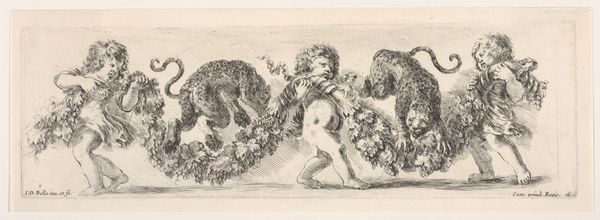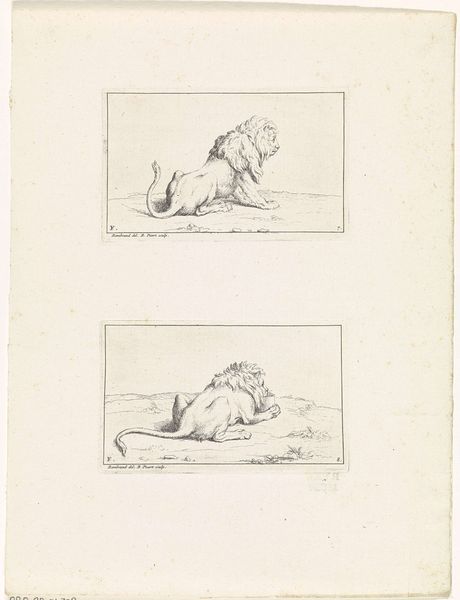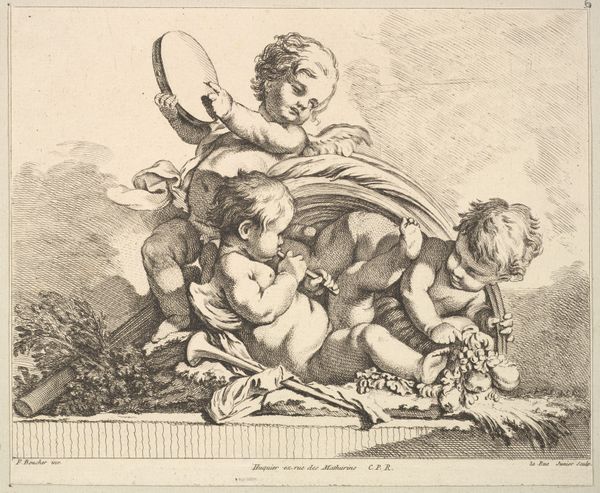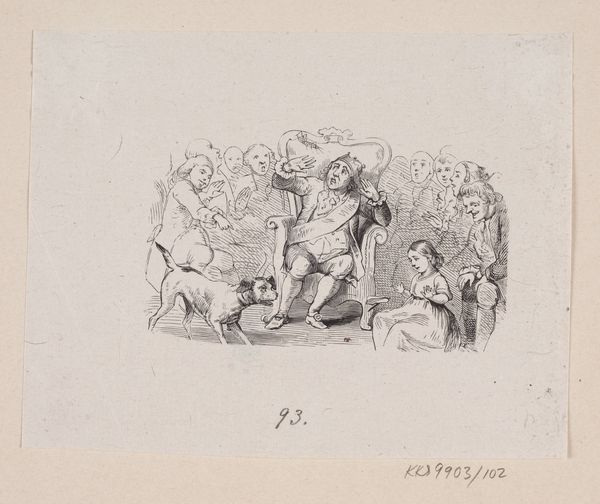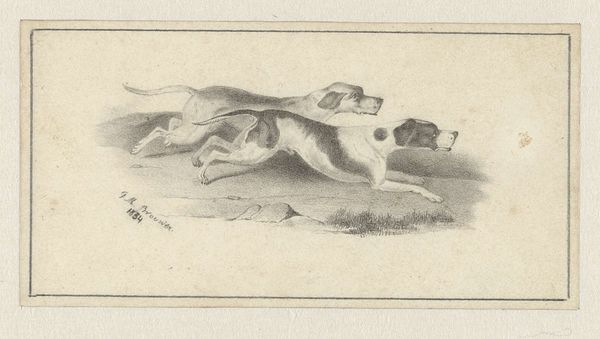
etching
#
allegory
#
baroque
#
etching
#
old engraving style
#
etching
#
figuration
#
genre-painting
Dimensions: height 27 mm, width 60 mm
Copyright: Rijks Museum: Open Domain
Editor: Here we have Noël Le Mire’s “Vignet met twee putti,” created around 1760, an etching on paper. The first thing I notice is the delicacy of the lines, giving these cherubic figures a sense of airy lightness. What story do you see in this vignette? Curator: The Rococo period, from which this etching hails, favored ornate details and playful themes. These 'putti,' or cherubs, were incredibly popular. Considering its purpose, the 'vignet'—small, decorative design—was typically incorporated into books or manuscripts. In its original context, this wasn't just decoration; it helped elevate the written text. Who were these books created for, and how do these images affect literacy at that time? Editor: So, beyond decoration, it served almost as a status symbol or further marketing, perhaps? Given the limited access to education during the 18th century, these visuals could certainly enhance the impact of literacy. What else would be notable about its place in visual culture at the time? Curator: Exactly! Etchings such as these democratized art. Printmaking made images widely available, so this vignette participates in expanding visual vocabulary to audiences beyond wealthy art collectors. Do you notice anything that gives you hints as to its value, if any, or who it may have been sold to? Editor: The Baroque influence is also quite evident. Maybe a print collector of more modest means, eager to include Baroque imagery in their portfolio? I hadn't thought about it in relation to social access. It’s a nice detail to consider. Curator: I find that the study of an artwork such as this prompts us to ask meaningful questions about the public’s relationship to art, commerce and history. I appreciate these little pieces a lot more after learning this. Editor: Agreed! Thinking about it within a socio-political context gives it added dimension. Thank you!
Comments
No comments
Be the first to comment and join the conversation on the ultimate creative platform.
